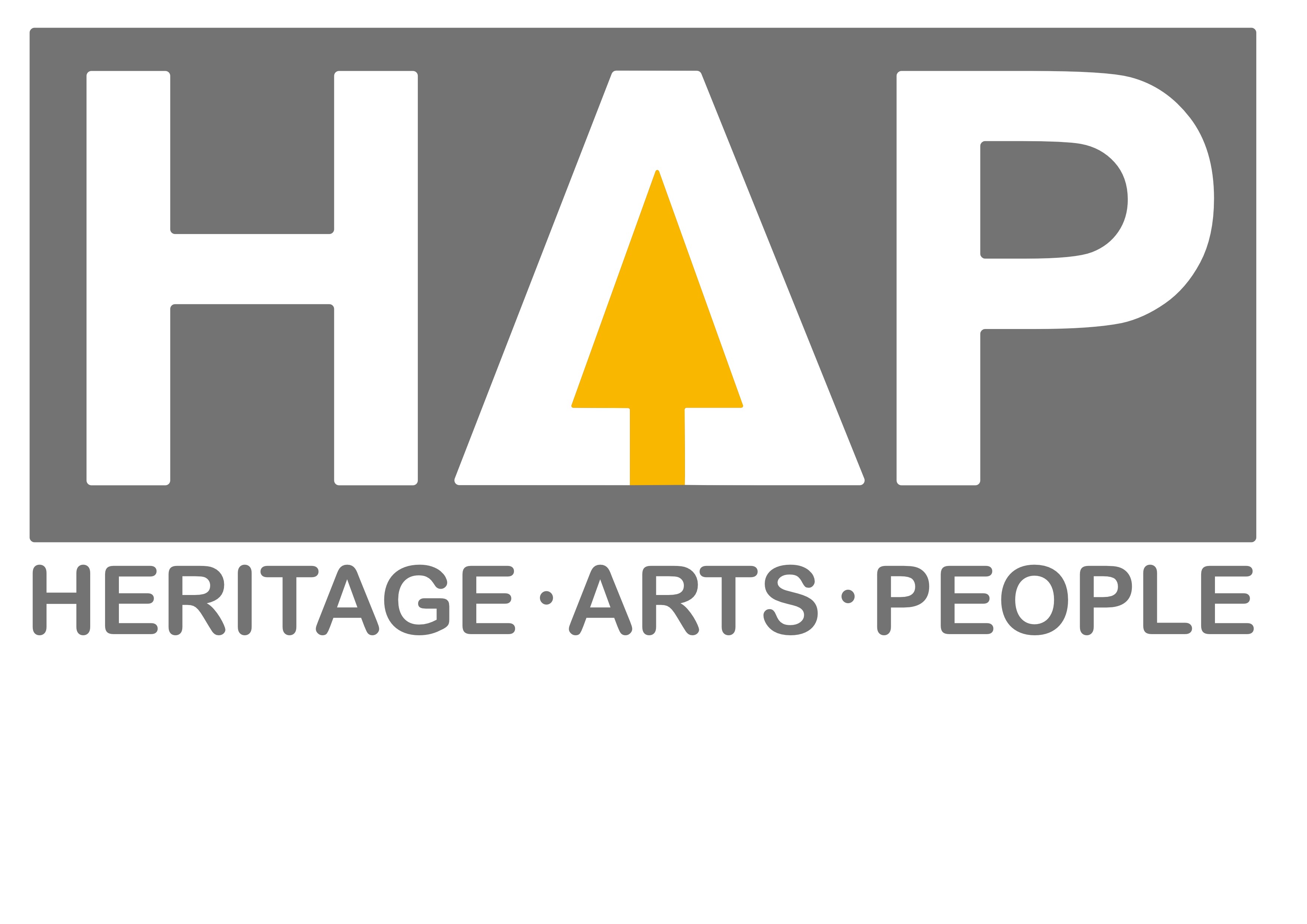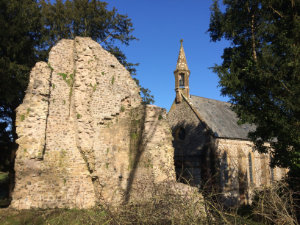History of Dunkeswell Abbey
Dunkeswell Abbey is a scheduled 13th century Cistercian abbey 2 miles north of the village of Dunkeswell. Some upstanding remains survive today and parts of the abbey church are incorporated into the current Victorian church constructed in 1841-2 by the Simcoe family. Dunkeswell Abbey was the ‘daughter’ of Forde Abbey, and was founded in 1201 by William Brewere. By the time of its dissolution in 1539 it was counted as one of the major monastic houses in Devon
Monasteries were an essential part of medieval life and acted as the centre of worship, learning and charity. Unlike many other monastic orders, the Cistercians sought seclusion and believed in living a very simple life, valuing hard work, study, prayer and self-denial. They were known as the ‘white monks’ as they wore undyed tunics to distinguish themselves from Benedictine monks who wore black.
The Cistercians would have chosen to build their Abbey at Dunkeswell because of its rural location and proximity to water, timber and other natural resources. The Cistercians were skilled at managing water and diverted local watercourses to supply the large fish ponds where they farmed fish. The earthworks of these fishponds are still visible today.
As well as monks, the community at Dunkeswell would have included many lay brethren who acted as ploughmen, dairymen, shepherds, carpenters and masons. Some masonry remains of the lay-brothers dormitory (which would have been on the first floor of the west range) can be seen at the site.
The site is now a Scheduled Monument and is currently on the Historic England Heritage At Risk register. The abbey is an important part of the Blackdown Hills historic landscape and helped shape the environment we see today.
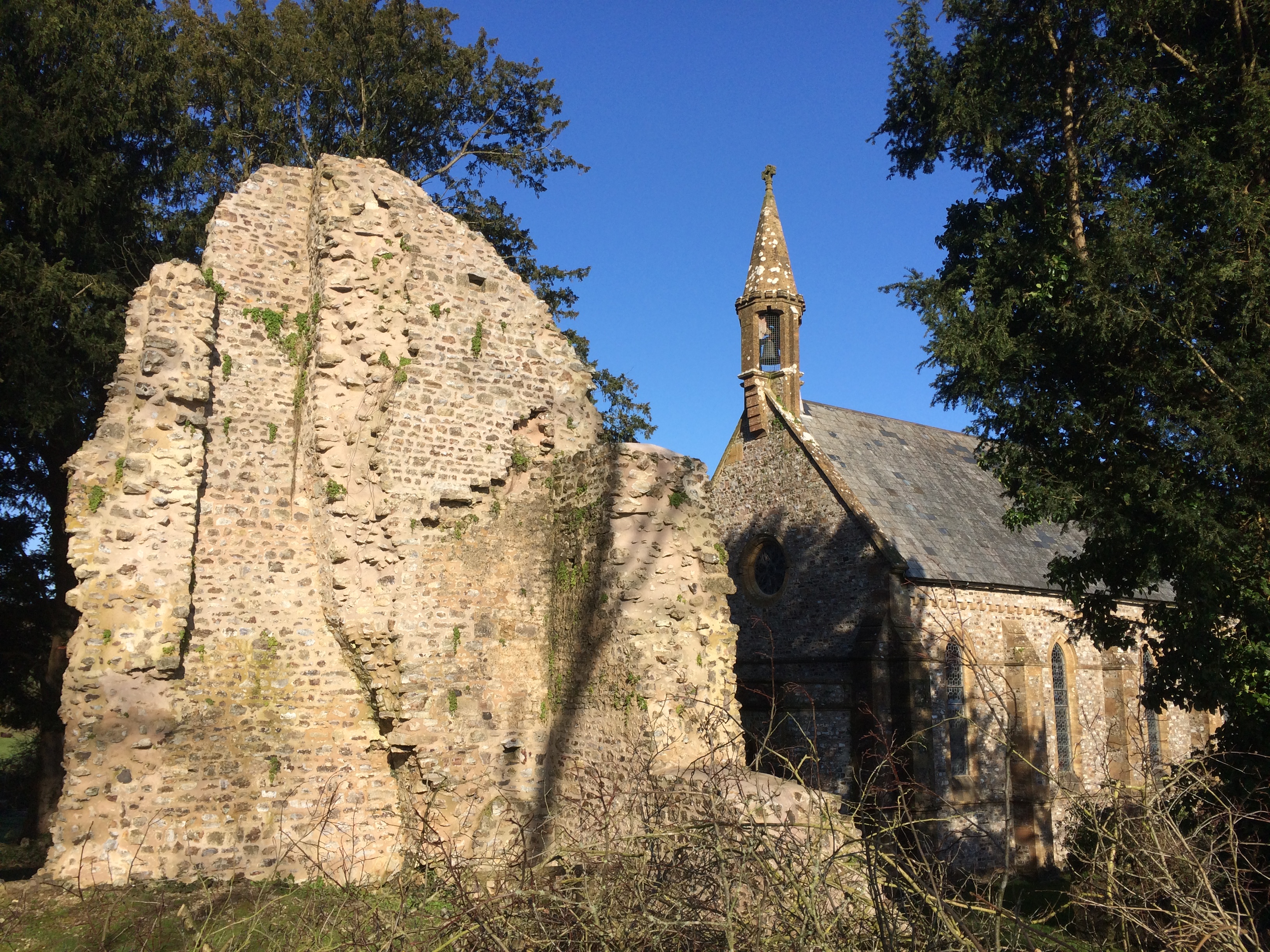
The ruined remains of the west range with the Victorian Church behind
Aims of the Discovering Dunkeswell Abbey Project

Start Date: 2019-04-12 End Date: 2020-04-30
Although the abbey is an important part of the Blackdowns historic landscape, it was not well known or understood in the wider community. Very little of the abbey survives today and a lack of signage or interpretation information at the site made it difficult for the community to connect with or understand the layout and significance of the abbey complex.
The aim of the project was to raise the profile of the abbey and to help the community connect with and understand the site through a community archaeology programme, multi-generational community engagement activities and interpretation material on-site. There was a focus throughout the project on enabling volunteers to learn new skills and on increasing well-being.
The project was run by Heritage Arts and People (HAP) CIC, in partnership with the Blackdown Hills AONB.
The project ran for 1 year and involved:
- River Walking Survey
- Earthwork Survey
- Geophysical Survey
- Test pit excavation
- Programme of learning with schools and community groups
- School education packs
- Tours and activities during Heritage Open Day
During the project HAP worked with more than 30 volunteers on research fieldwork and learning opportunities. Volunteers worked alongside professional archaeologists learning skills and gaining knowledge about both Dunkeswell Abbey and the techniques being used to further understand it.
New Discoveries: Our Community Archaeology Programme
The volunteer programme gave our volunteers an enriching and enjoyable learning experience and helped them discover more about the abbey complex.
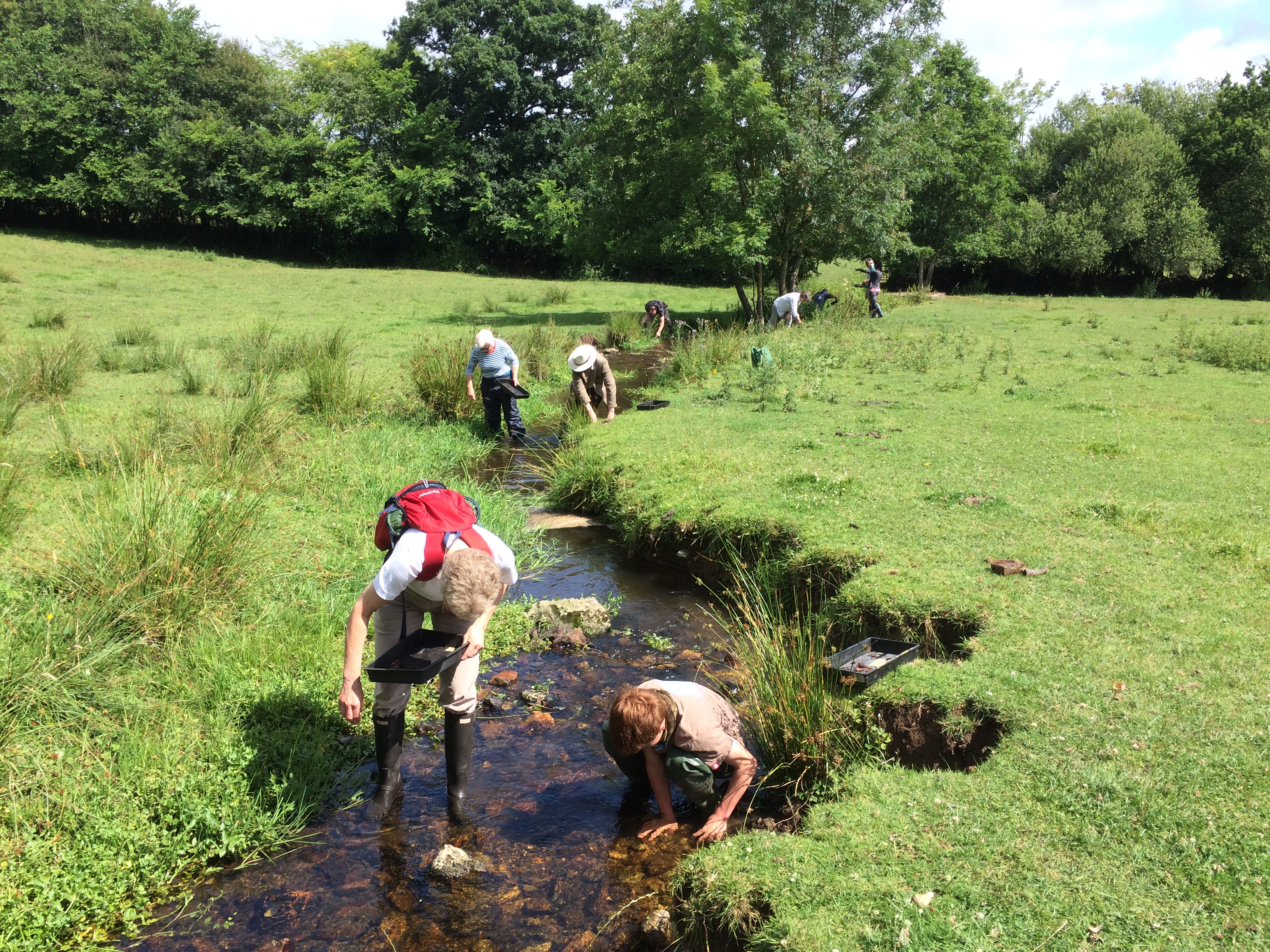
During the river walking survey volunteers helped to recover medieval floor tiles, peg tiles and building materials. At least one of the decorated floor tiles represented a previously unknown design. The discovery of tile wasters revealed completely new evidence for the production of plain peg-tiles (used in roofing) on the site, supporting emerging evidence that the parishes around Dunkeswell supported a major ceramics industry in the medieval period and in the 16th century.
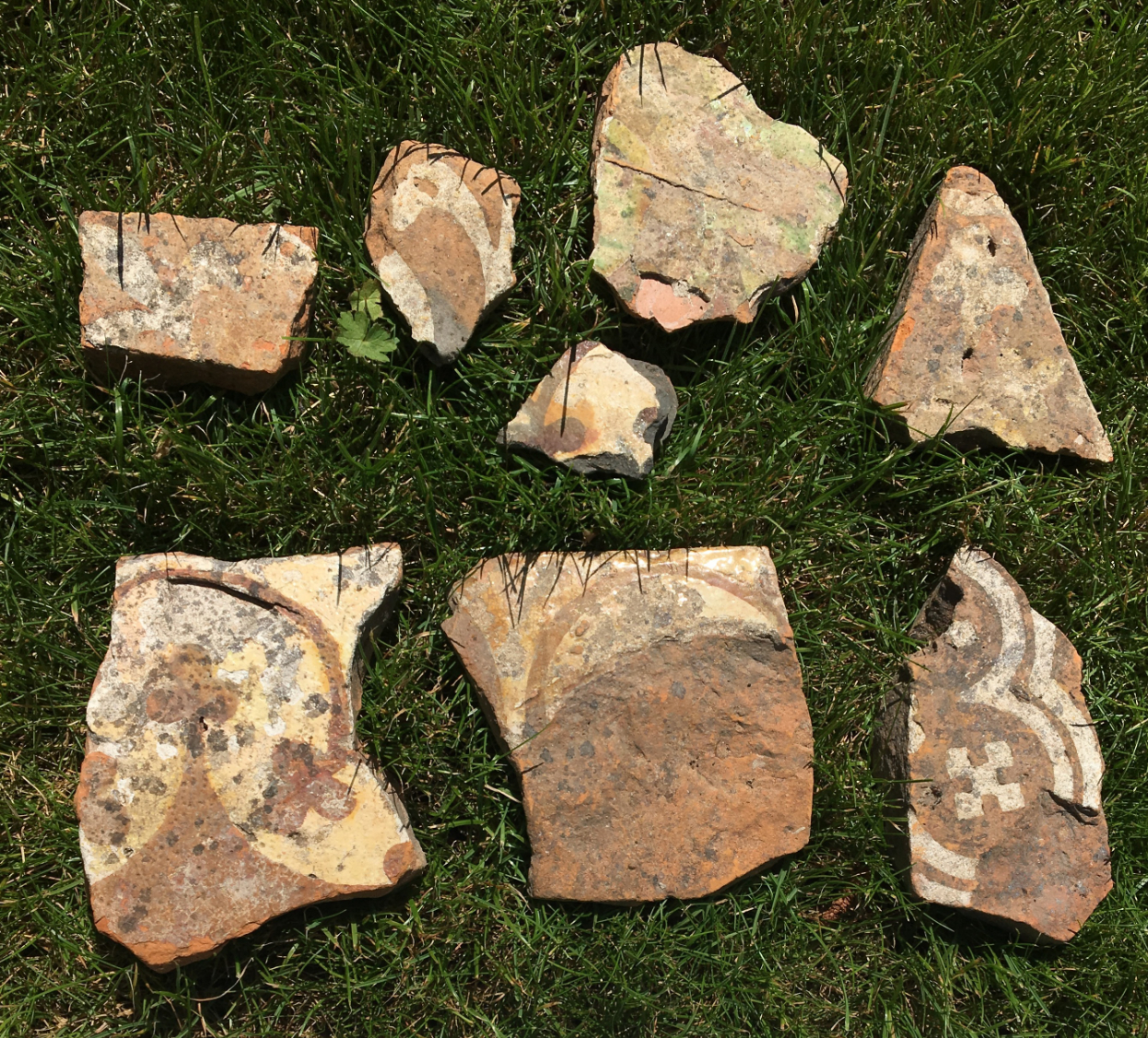
Floor Tile Fragments
The results of the earthwork survey at Abbey Mill Farm suggest that the earthworks represent the remains of part of the inner precinct boundary of the abbey, with the remains of two building platforms which may be the sites of service buildings for the cloisters.
The geophysical survey explored four areas around the abbey ruins to try and further understand the nature of earthworks previously identified during aerial surveys.
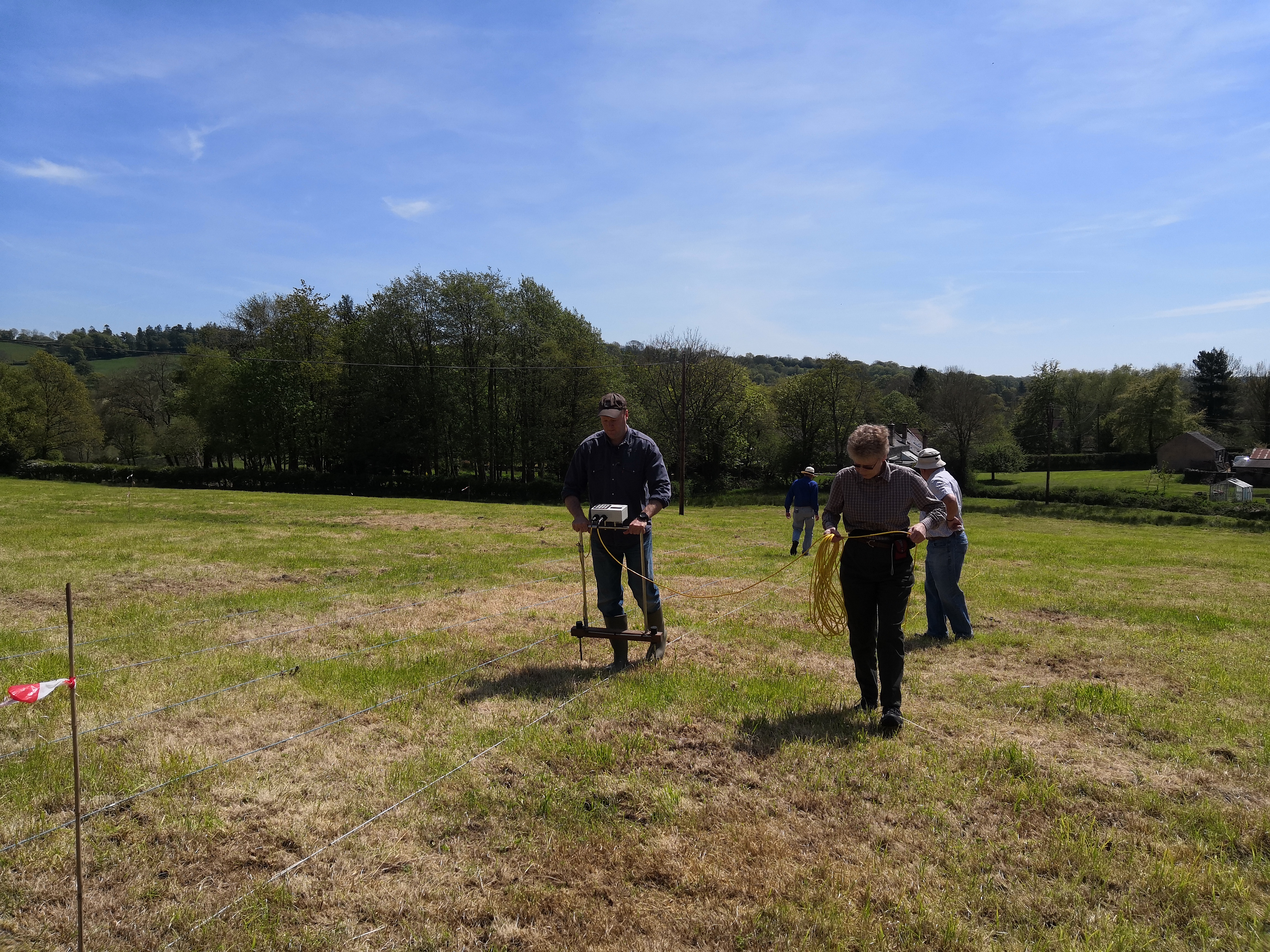
Geophysical survey with volunteers
Following on from the geophysical survey, two test pits were excavated in an area identified as a possible furnace/extractive site, targeting a linear earthwork and putative slag deposit. The excavation revealed large quantities of dumped metal working waster: iron smelting slag, fragments of clay furnace lining and possible iron ore. The possible in-situ remains of a clay structure, potentially a smithing hearth bottom, were also discovered, suggesting on site iron working production. A sample taken from a sealed burnt layer had the potential for radiocarbon dating, so with a grant from the Blackdown Hills AONB, the material was processed and a radiocarbon date extracted. The radiocarbon determination for charcoal recovered from the sample returned a date in the late Roman Period.
Volunteers were involved in all of the archaeological investigations, as well as sessions with heritage experts and a trip to the Devon Heritage Centre.
Dunkeswell Abbey on Tour
As part of the project we worked with local primary schools and community groups to share the results of the community archaeology programme. In addition to this, an open day was held at the abbey during the Heritage Open Days 2019. More can be read about that here.

Heritage Open Day at Dunkeswell Abbey
Reconstructing Drawing of the Abbey
Before the closure of Dunkeswell Abbey following the Dissolution of the Monasteries in 1539. it would have acted as a centre of worship, learning and charity, full of activity, industry and life. To try and help visitors understand how the abbey might have looked, historic buildings specialist and illustrator Richard Parker was commissioned to create a reconstruction drawing of the abbey.
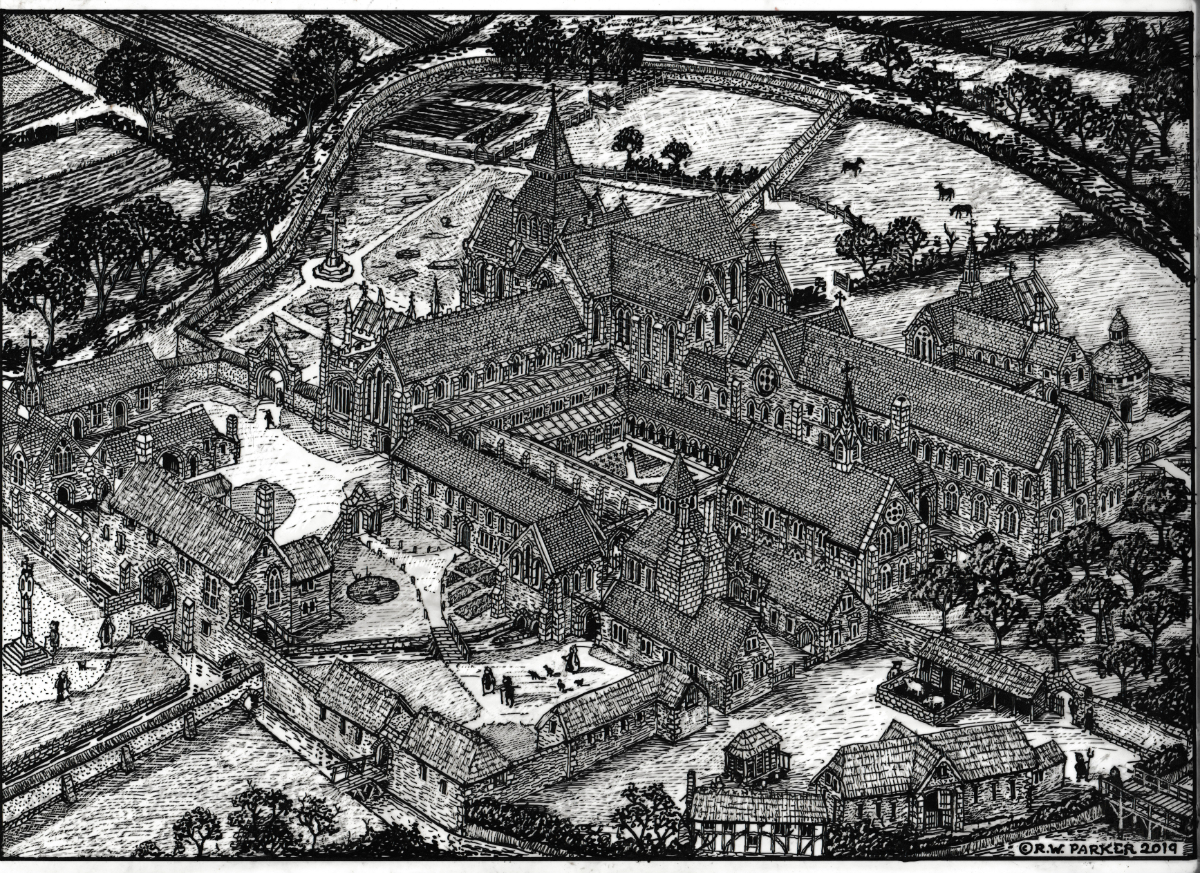
Reconstruction drawing of Dunkeswell Abbey (for a labelled version see leaflet attached below)
“The Discovering Dunkeswell Abbey project was very much welcomed by Historic England as an enabling project to test and develop the levels of local and wider social engagement at this relatively remote and unknown but nationally important site. The outcomes have been excellent, the HAP team have sought ought and brought together interested local people and individuals as well as people from further afield. It was really impressive to see the commitment and dedication demonstrated by the HAP team being ably communicated to volunteers and local people, some of whom have continued to work on aspects of research and conservation at Dunkeswell Abbey even after the project closed.” Charlotte Russell, Heritage at Risk Projects Officer, Historic England
Reports relating to Discovering Dunkeswell Abbey
- Discovering Dunkeswell Abbey Evaluation Report [pdf]
- Earthwork Survey of Abbey Mill Farm Orchard, Dunkeswell, East Devon, Discovering Dunkeswell Abbey Project Report [pdf]
- Dunkeswell Abbey Geophysics Survey [pdf]
- River Survey and Finds Report [pdf]
- Land East of Burnsome Forde, Dunkeswell Abbey, Devon. Archaeological Test Pit Excavation [pdf]
Additional Resources
Funders and supporters
The Discovering Dunkeswell Abbey project was funded through the Heritage Lottery Fund, with additional funding from Devon County Council and the Blackdown Hills AONB.
The project was supported by:
Historic England
Dunkeswell Abbey Preservation Trust

Project Location
Parts of Dunkeswell Abbey are open to the public and interpretation material is now available to view in the red phonebox near the entrance to the Holy Trinity Church. There is also an interpretation board and leaflets inside Holy Trinity Church, located on the site of the Cistercian abbey church.
